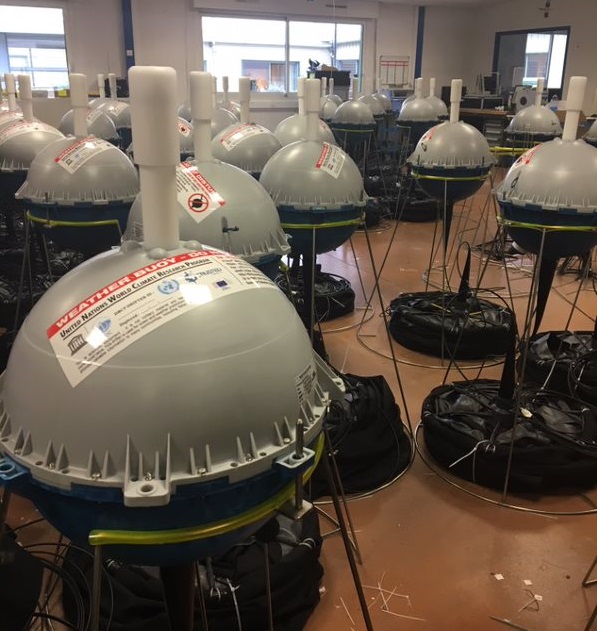High resolution sea surface temperature buoys for climate studies
- December 11, 2018
- Category: Flash info

As the COP24 enters its second week, climate change is on the world agenda. Within this context, EUMETSAT accepted the first batch of high resolution sea surface temperature (SST) drifting buoys from CLS and NKE, of the Trusted project consortium funded by Copernicus.
These buoys provide HR SST observations to validate the radiometers onboard Europe’s Sentinel-3 satellite, dedicated to oceanography, meteorology and climatology. The precision of the HRSST sensors on board this buoy detect small variations in temperature, providing unprecedented observations for climate studies.
Within this project, CLS provides the necessary Iridium hardware and airtime services, as well as expert data processing activities allowing the data to be posted on the Global Telecommunication System (GTS) of the World Meteorological Organization (WMO) for inclusion in numerical weather forecasting models. The data will also be available through the CMEMS in situ data portal.
Unprecedented observations for climate studies

The first 50 buoys manufactured by NKE were delivered to Météo France and will be deployed in the coming weeks onboard scientific vessels. The deployment plan elaborated by Météo France calls for dispersing the buoys in the Atlantic, Pacific, Indian and Southern Oceans, in order to provide global fiducial reference measurements for the Sentinel-3 family of satellites. The first deployments will take place in early 2019 in the Atlantic and Indian Oceans.
This innovative project is emblematic of Europe’s commitment to ensuring the quality of satellite observations that are used in weather prediction and climate studies.
Photo copyright NKE
